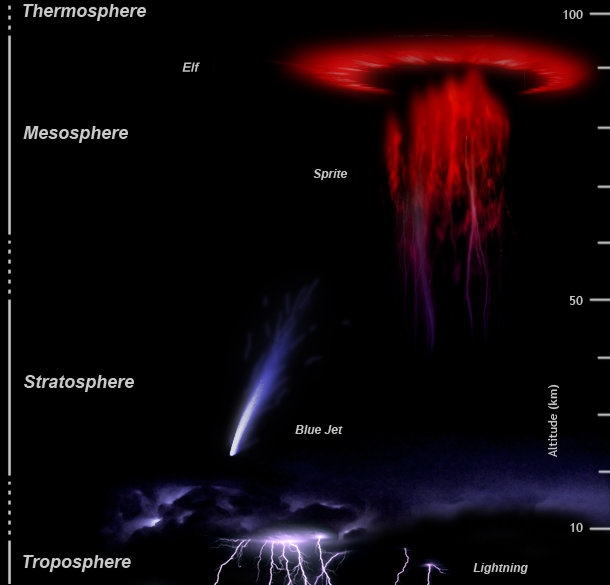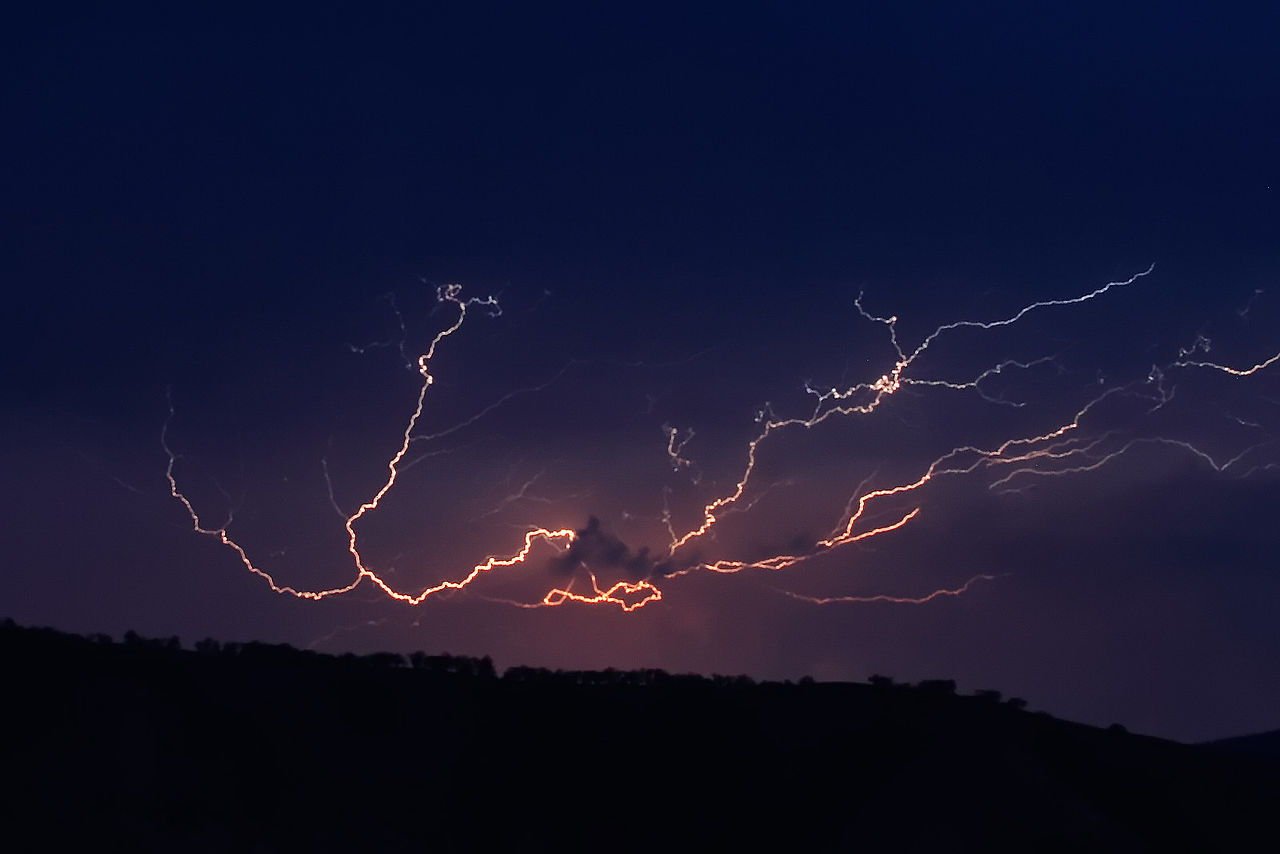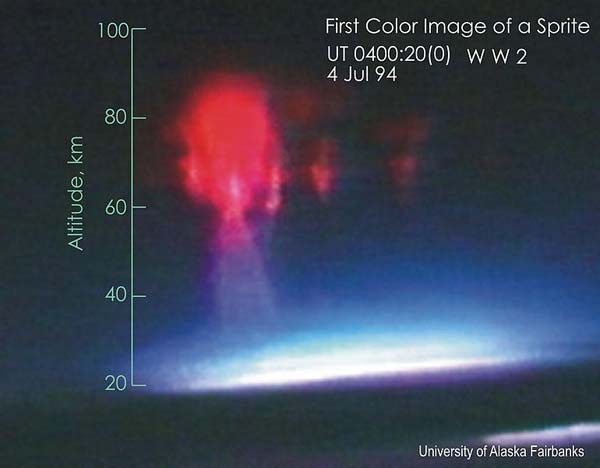During the summer thunderstorm season, not all of the fireworks you see are manmade. The skies will be filled with light—and many types of lightning!
What is Lightning?
Lightning starts with the collision of ice crystals, slush, and rain in a thundercloud. The slush and rain that develop near the bottom of a cloud build up a negative charge, while the tiny ice crystals carried to the top of the cloud become positive. When a channel of air (known as a “step leader”) opens up between the two layers, a near-instantaneous discharge of electrons and ions flows from one side to the other. This is what we know as lightning. The heat given off by the flow of electrons makes the surrounding air molecules explosively expand, causing a flash of light and a shock wave (thunder). As my previous post on lightning noted, those lights are spectacular electric sparks.
The discharge usually flows within or between clouds, but about 25% of the time, it hits the ground. Sometimes when the discharge stays in the air, the lights it forms are very strange. A few of these are known as red sprites, blue jets, and even elves, as pictured below.

There are different types of lightning—some quite weird! Source: NOAA
Most lightning flashes in the air, rather than striking the ground. You see the clouds light up and hear the thunder.
- The majority of these flashes are “heat lightning” with the electricity flowing between the top and bottom of a cloud, making the whole thundercloud glow.
- The next most common is the “anvil crawlers” and the electricity sparks from cloud to cloud.

Three fourths of all lightning stays in the sky, even soaring up toward space. Source: Wikipedia
- Then there are sparks that flare straight up towards space. For more than two hundred years, scientists dismissed these types of lightning as nonexistent. Then, on July 6, 1989, scientists from the University of Minnesota accidentally captured the first image of the glowing red lightning dancing high in the air. They named the “nonexistent” lightning a sprite, after fairy-tale air sprites.

A circle of red sprites dancing 50 miles high in the sky. Source: Wikipedia
Since then other forms of lightning have been found and given exotic names—blue jets, red sprites, elves, trolls and even tiny gnomes. The area above storms can get very strange.
Summer is the season to see these rare forms of sky lightning (especially in July). Some of the best sightings are in the Midwest and Great Plains. So go outside and look up—the skies are filled with “magical” lights.










Comments